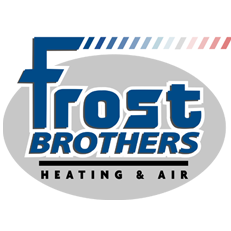
Air Conditioner and Heat Pump Installation From Frost Brothers
Homeowners often take their Heating, Ventilation, and Air Conditioning (HVAC) systems for granted, not fully understanding the intricate mechanical processes that keep their homes comfortable throughout the year. The HVAC experts at Frost Brothers Heating and Air Conditioning, also known as Frost AC want to help demystify these essential systems.
We are located in Lewisville, Texas, but Frost Brothers extends its top-tier service to the 20 closest communities, including Flower Mound, Highland Village, Denton, Little Elm, The Colony, Frisco, Carrollton, Addison, Farmers Branch, Irving, Grand Prairie, Arlington, Grapevine, Southlake, Colleyville, Bedford, Euless, North Richland Hills, Hurst, and Fort Worth.
With a professional team well-versed in servicing top name brands like Carrier, Trane, Lennox, Rheem, Goodman, and Bryant, Frost Brothers ensures your residential heating and air conditioning systems are always functioning at their best. In this article, we'll provide a simplified guide to understanding the components and operation of your HVAC system.
Basic Components of an HVAC System
- Thermostat: This is the control center of your HVAC system. You can adjust your desired temperature here. Many modern systems feature programmable or smart thermostats that allow for automated and efficient control over your home's climate.
- Furnace: The furnace is the heart of the system, responsible for heating the air in your home. It typically uses natural gas, propane, or electricity to heat a set of coils.
- Heat Exchanger: Located within the furnace, the heat exchanger absorbs heat and warms the cool air when the thermostat activates the furnace.
- Evaporator Coil: This component resides inside the furnace but functions with the air conditioner during cooling cycles. It holds the chilled refrigerant that removes heat from the air as it is forced over by the blower.
- Condensing Unit: This unit is placed outside the home and filled with refrigerant gas. When the refrigerant has collected heat from inside your home, it's sent to the condensing unit where it's cooled and transformed back into a liquid.
- Refrigerant Lines: These are narrow tubes made from a durable metal that carry refrigerant to the condensing unit in cooling mode and then back to the evaporator coil.
- Ductwork: These large tubes in your home carry the heated or cooled air from the HVAC system to the various rooms in your home.
- Vents: Vents allow the conditioned air from the HVAC system to enter into your home.
- Air Handler/Blower: This component moves the air through the ducts and into your home.
